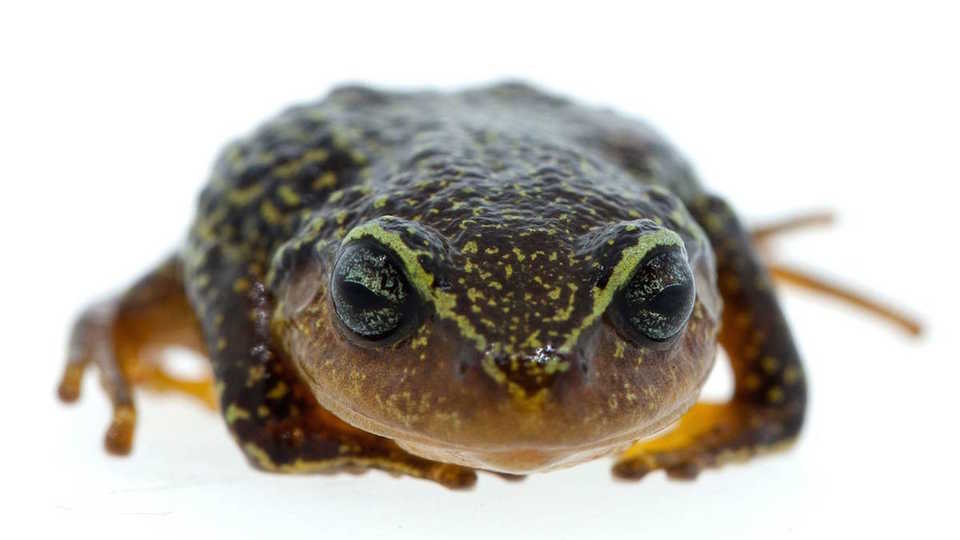Science News
New Discoveries: Frogs, Walking Fish, and Dragon Millipedes
New Discoveries is a collaboration between Stanford and Academy scientists and staff, appearing on the second and fourth Wednesdays of every month. Here we celebrate newly described species and demonstrate how much more there is to learn about life on Earth.
Frogs Aplenty!
Over the past few weeks, there have been several new frogs discovered and described. Pristimantis macrummendozai is the latest amphibian from Columbia. With distinctive yellow eyebrows, this frog is at home in the wetlands in higher altitudes, preferring to breed above 3,500 meters (or 11,500 feet). Unlike other amphibians, this new species lays its eggs on the ground, and not in water.
A teeny new frog, Microhyla laterite, was discovered in India, and is already endangered. Measuring only 1.7 centimeters (.7 inches), it’s named for the laterite rock formation on which it is found. These formations are thought to be devoid of life and are heavily mined, and the authors hope that new discoveries like this one bring attention to the region to help protect it.
While Micrixalus herrei was discovered two years ago in the Western Ghats of India, scientists recently described something crazy about the tadpoles of these dancing frogs. These offspring don’t swim around in water, but rather squirm around underground in sandy surfaces, emerging once they’re fully formed frogs. No wonder it took so long to discover these tadpoles!
New Walking Fish
If you think sandy tadpoles are weird, get a load of this newly described fish from Thailand. According to Scientific Reports, “... the blind cavefish Cryptotora thamicola walks and climbs waterfalls with a salamander-like… gait and has evolved a robust pelvic girdle that shares morphological features associated with terrestrial vertebrates.” Other fish, such as lungfish, mudskippers, and the Hawaiian waterfall-climbing goby are known for some walking-like movement, but Cryptotora takes it a step farther, providing insights to our own evolution from sea to land.
Dragon Millipedes
Ready to get a little creeped out? Scientists discovered six new species of Chinese dragon millipedes, some of which live in caves and have unusually long legs and antennae. One resembles a stick insect, only with a lot more legs, others appear ghostly white and semi-transparent. These millipedes are known for having an 'armour' of unusual spine-like projections and some of these species produce toxic hydrogen cyanide to ward off predators. And while they don’t have a million—or even a thousand—legs, they have enough to scare even the toughest of entomophobes.
Image: Instituto Humboldt
